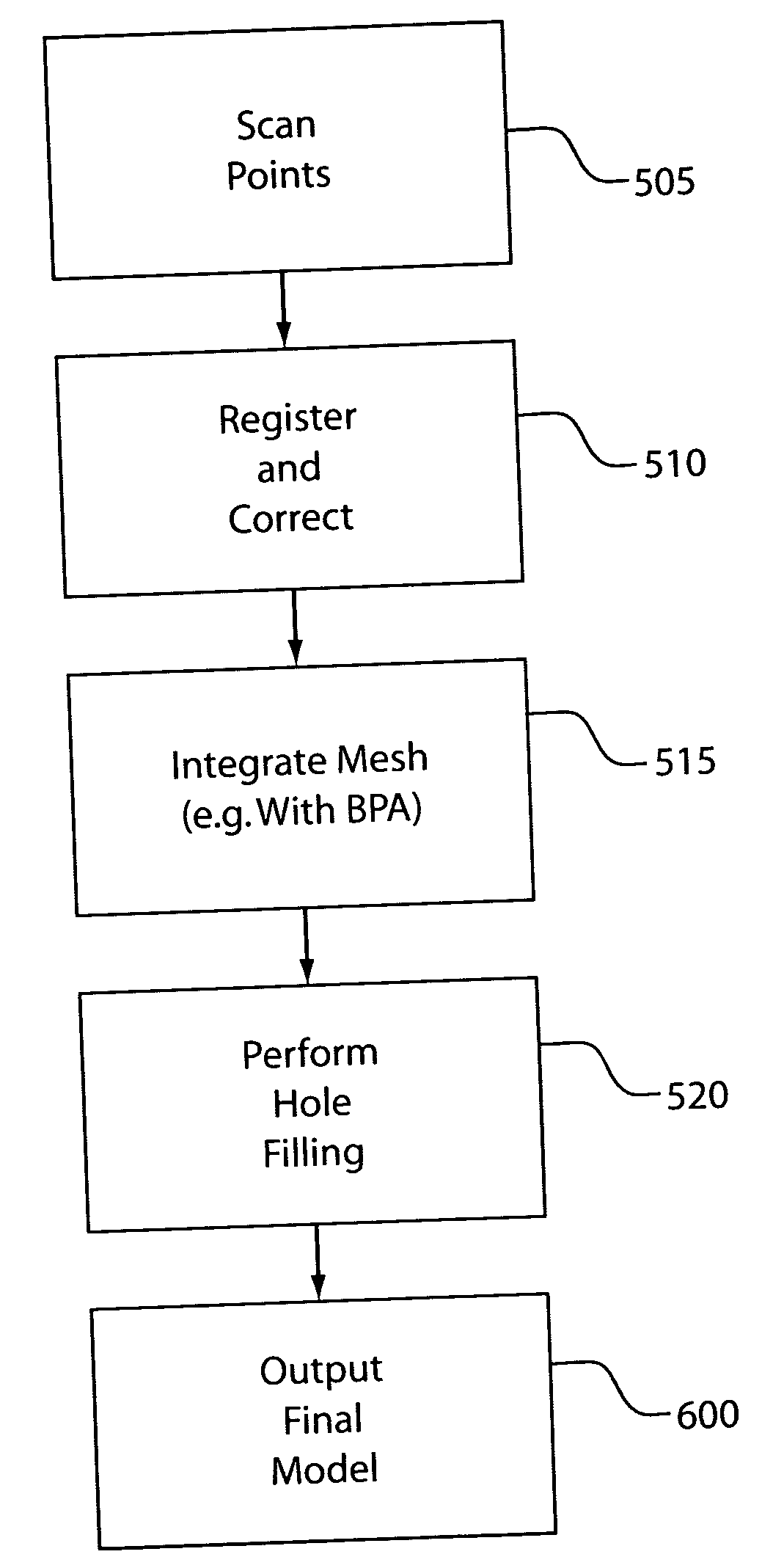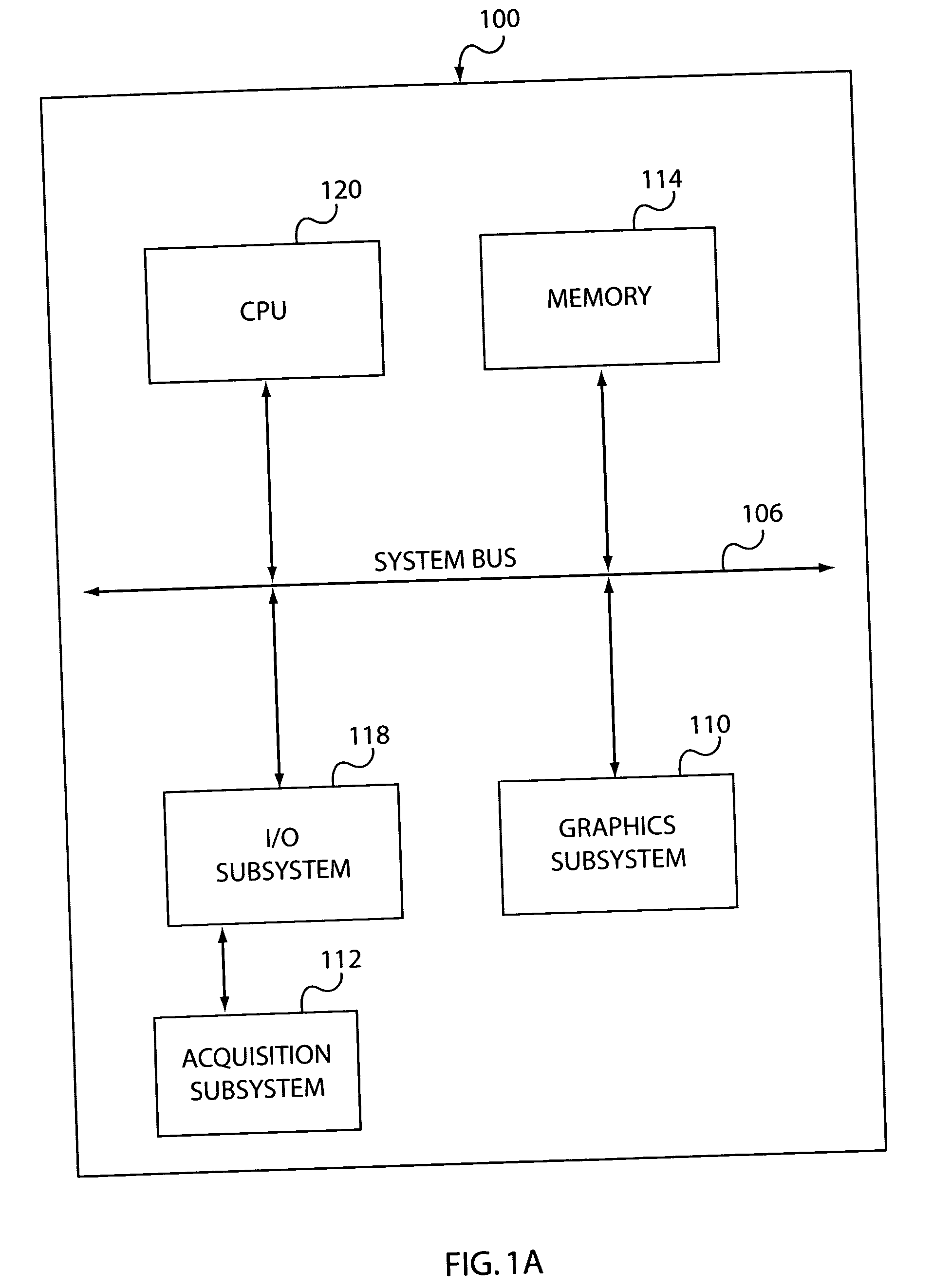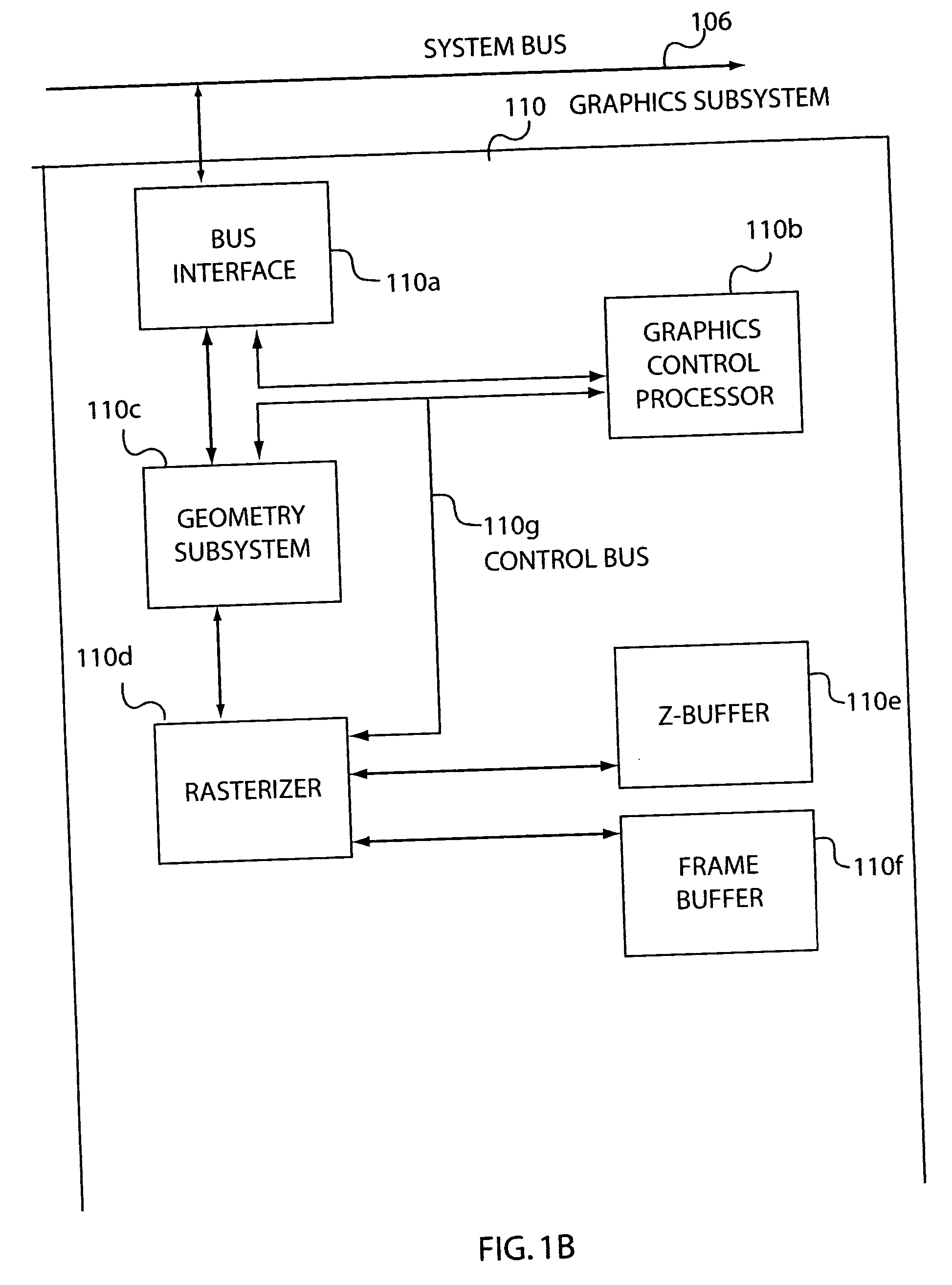System and method for hole filling in 3D models
a technology of system and method, applied in the field of system and method for processing image data, can solve the problems of inability to physically reproduce an object with an incomplete surface definition, inability to penetrate one another, and large black regions on objects that are unrealistic and distracting
- Summary
- Abstract
- Description
- Claims
- Application Information
AI Technical Summary
Problems solved by technology
Method used
Image
Examples
Embodiment Construction
[0036] The present invention provides a method and system for filing holes in models produced by machine vision or computer graphics systems. For purposes of this disclosure, a model is a numerical definition of an object's shape. In particular, models produced from data captured by physical measurements of real objects are considered in detail (although this method could be applied to any numerical model of a surface). Holes are identified in the object, and the surface points, or vertices around the holes are also identified.
[0037] Based on these points, a Radial Basis Function (RBF) is fitted for each hole, which is used to define a volume throughout space. Points lying on the implicit surface that pass through this volume, where the RBF is zero, are extracted. Any method can then be used to integrate these new points to the existing mesh to complete the hole-filling.
[0038] Before integration of the holes, to form a single surface, overlapping scans may be averaged. In stitchin...
PUM
 Login to View More
Login to View More Abstract
Description
Claims
Application Information
 Login to View More
Login to View More - R&D
- Intellectual Property
- Life Sciences
- Materials
- Tech Scout
- Unparalleled Data Quality
- Higher Quality Content
- 60% Fewer Hallucinations
Browse by: Latest US Patents, China's latest patents, Technical Efficacy Thesaurus, Application Domain, Technology Topic, Popular Technical Reports.
© 2025 PatSnap. All rights reserved.Legal|Privacy policy|Modern Slavery Act Transparency Statement|Sitemap|About US| Contact US: help@patsnap.com



